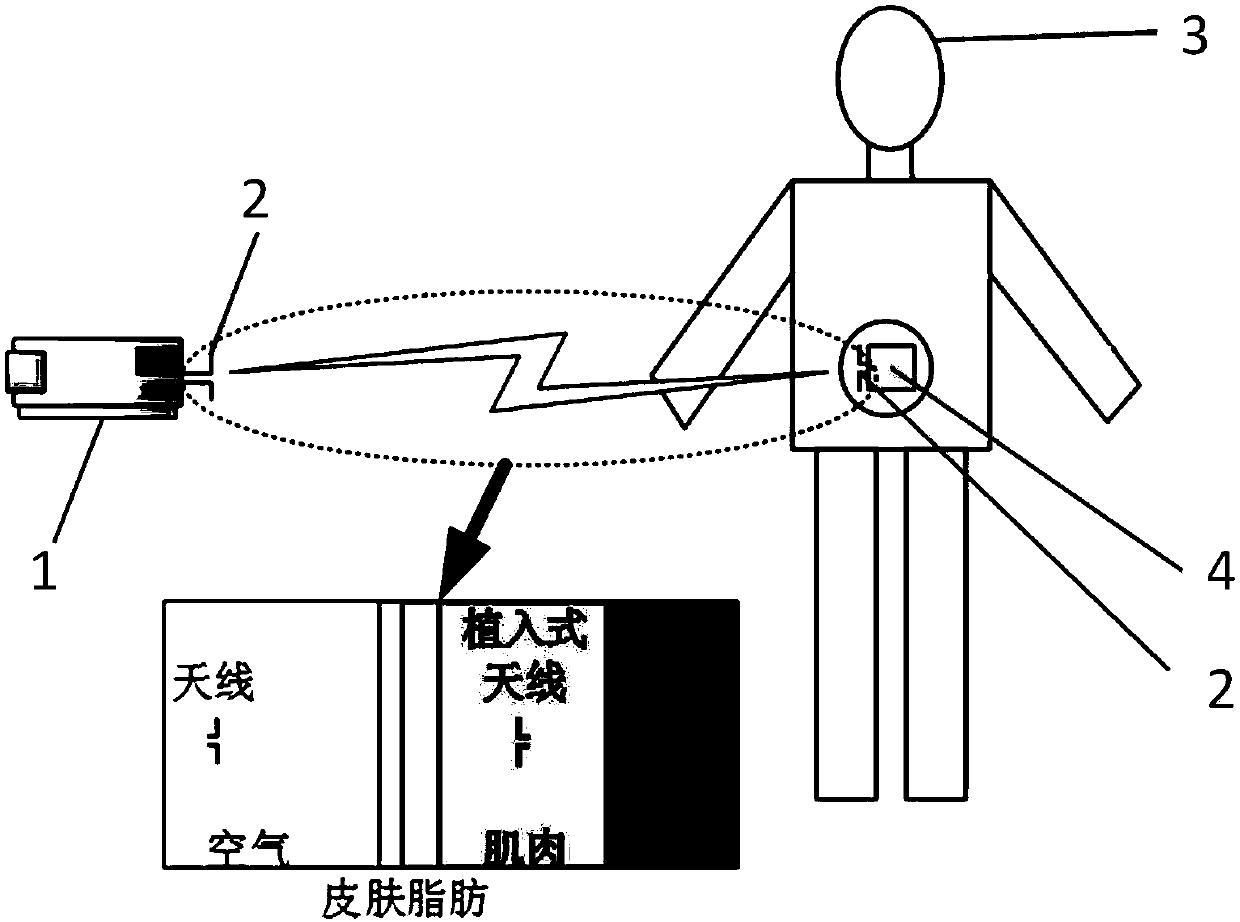Human body channel modeling method, terminal device and storage medium
A technology of human body channel and modeling method, which is applied in the field of human body channel modeling method, terminal equipment and storage medium, and can solve problems such as inability to describe signal propagation characteristics, inability to correctly analyze the internal mechanism of electromagnetic waves, and lack of generality.
- Summary
- Abstract
- Description
- Claims
- Application Information
AI Technical Summary
Problems solved by technology
Method used
Image
Examples
Embodiment 1
[0083] In order to more vividly and accurately describe the characteristics of the human body channel and the internal propagation mechanism, considering the particularity that the human body channel contains multiple layers of biological tissue, this embodiment 1 proposes a human body channel modeling method, including the following steps:
[0084] S1: According to the multi-layer tissue media of a specific part of the human body, construct a layered plane geometric model of the part.
[0085] In this embodiment, taking the human abdomen as an example, it is equivalently simplified as figure 2 The layered plane geometric model of the human abdomen is shown, including four layers of tissue including skin, fat, muscle, and small intestine. Among them, d s 、d f 、d m 、d i They are the thickness of each layer, that is, the thickness of human skin, fat, muscle and small intestine wall.
[0086] The incident wave is incident on the interface between air and skin at any angle, ...
Embodiment 2
[0150] The present invention also provides a human body channel modeling terminal device, including a memory, a processor, and a computer program stored in the memory and operable on the processor. When the processor executes the computer program, the present invention is realized. Steps in the above method embodiment of the first embodiment of the invention.
PUM
 Login to View More
Login to View More Abstract
Description
Claims
Application Information
 Login to View More
Login to View More - R&D
- Intellectual Property
- Life Sciences
- Materials
- Tech Scout
- Unparalleled Data Quality
- Higher Quality Content
- 60% Fewer Hallucinations
Browse by: Latest US Patents, China's latest patents, Technical Efficacy Thesaurus, Application Domain, Technology Topic, Popular Technical Reports.
© 2025 PatSnap. All rights reserved.Legal|Privacy policy|Modern Slavery Act Transparency Statement|Sitemap|About US| Contact US: help@patsnap.com



